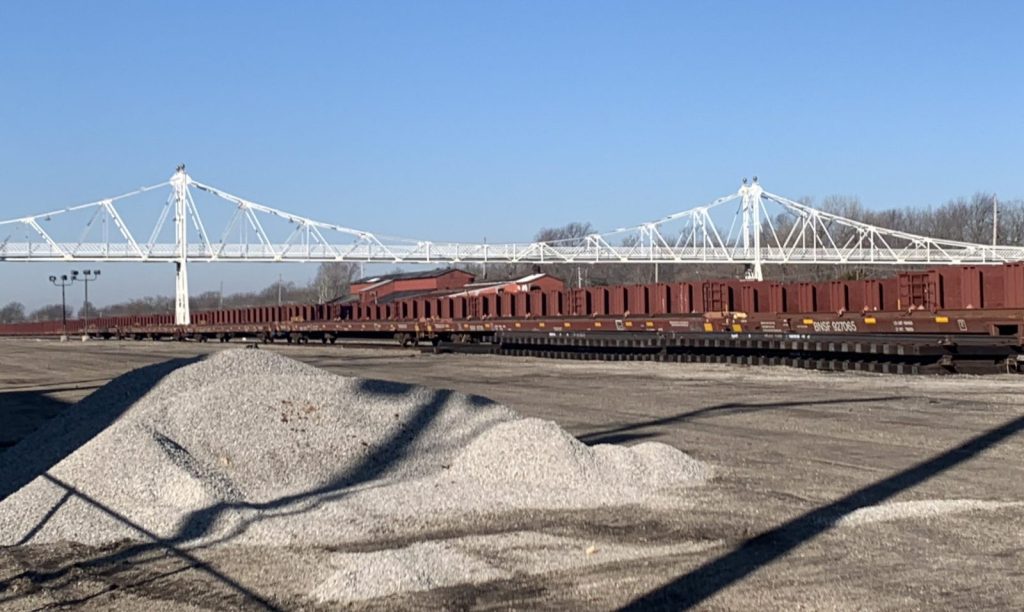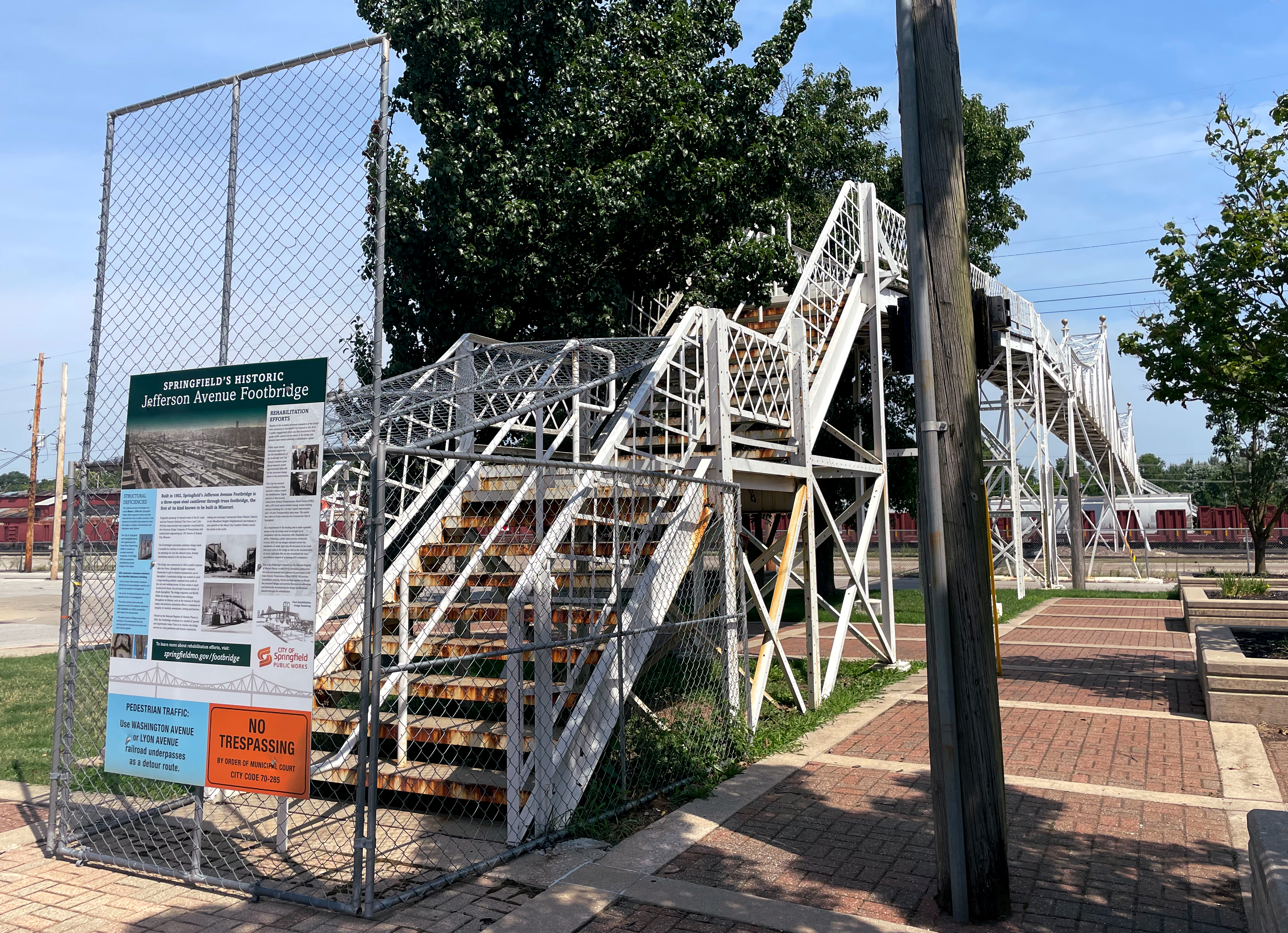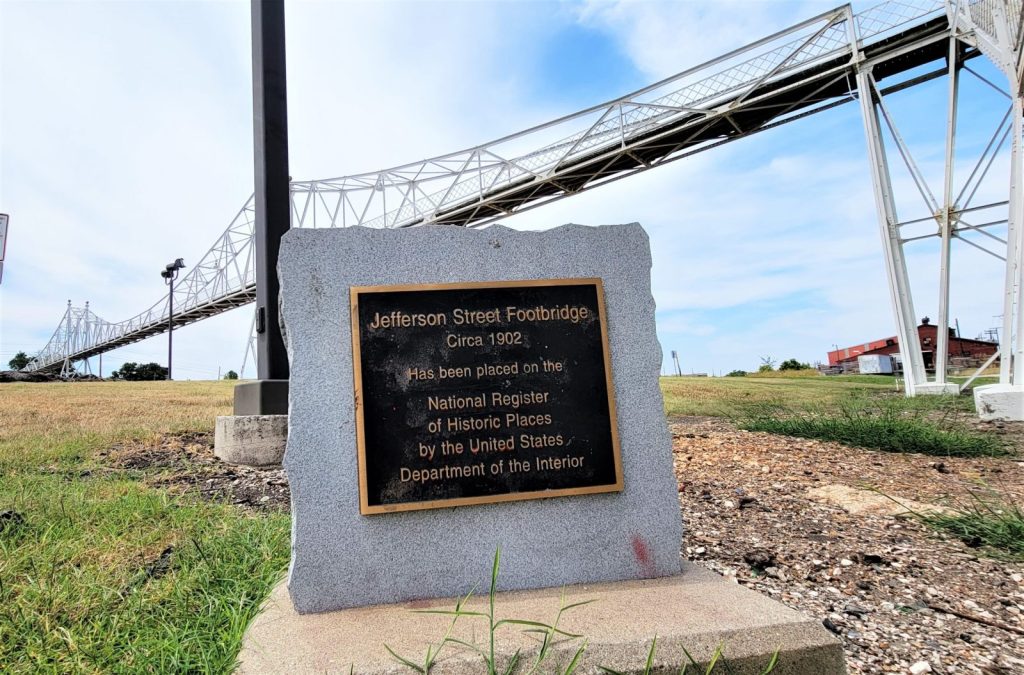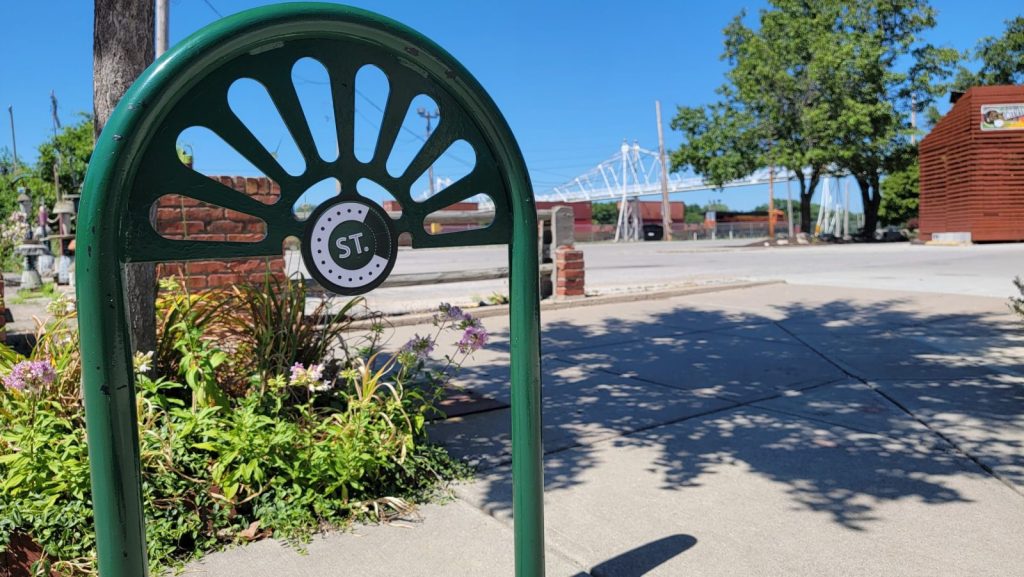OPINION|
Correction: The Springfield Police Department is currently about 56 full-time officers short of being fully staffed, according to Police Chief Paul Williams. A prior version of this story had a lower number, which was based on information from the department.
Has the train left the station for the historic Jefferson Avenue Footbridge?
The latest cost estimates for renovating and then re-opening the 562-foot footbridge ranged from $8.5 million to $10.8 million.
It appears the City Council plans to approve the $10.8 million renovation. It will include the removal of lead-based paint and construction of elevators at both ends of the bridge to make it accessible to all.
Most of the cost will be paid by a state grant of roughly $7.8 million; $50,000 is coming from the Commercial Club, a group of supporters of the six-block Commercial Street Historic District; and the remainder from local sales tax funds and borrowing.
I remember years ago when the Missouri Hotel closed in 2015. It was at 420 East Commercial St. and housed people without shelter. It has been vacant since.
Many Commercial Street boosters thought that the hotel and its clientele was holding back the rebirth of Commercial Street, which had its heyday in the late 1800s when it was the main thoroughfare of the city of North Springfield, which became part of Springfield in 1887.
We have many needs in the city of Springfield that extend beyond Commercial Street. I'm not sold on the idea that renovating the footbridge with public funds is a wise investment.
For example, we're about 56 police officers short right now and hiring someone fresh out of the academy costs $52,000 a year.
I'm also not convinced there will be much pedestrian traffic over that 562-foot span at night, over a desolate stretch of 13 railroad tracks. Are we going to devote a police officer to the footbridge?
Frisco Railroad wanted it built
The suspension footbridge was built in 1902 at the urging of the Frisco Railroad, the city's major employer at that time and for decades beyond.
Frisco sought the bridge because its then 16 railroad tracks — running east-and-west — had created a no-man's land that pedestrians were crossing with increasing regularity, dodging locomotives. Think of Frogger.
In fact, the railroad company flexed its political muscle and told city officials it just might uproot and move to Monett if it didn't get what it wanted.

As a result, the footbridge was built with public funds, not Frisco money. The cost was about $8,200, the low bid.
Looking back, Frisco had helped created the dangerous situation in the first place. It had constructed buildings at key locations that blocked streets from passing through its property. A passenger station was built at the head of Benton Avenue, for example; a freight station was constructed on Boonville.
Footbridge is a window into city's past
John Hawkins, a member of the Springfield Landmarks Board, wants to bring the footbridge back to life. The Board is a volunteer group that advises the city on identifying, protecting, retaining and preserving historic sites in the city.
Hawkins, like many others, wants the footbridge to be renovated and reopened.
“We do have people that that come to the city from all over the United States, especially railroad buffs, that love to check out the bridge,” Hawkins says. “It's unfortunate that they're not able to traverse it.
“If you look at the original intent of the footbridge, it was meant to connect the neighborhoods north of what was then the Frisco yards with the Commercial Street district. It could serve as that again. I think it would be a huge, huge lift for those neighborhoods.”
The footbridge is not only on Springfield's list of historic places but was added to the National Register of Historic Places in 2003.
“I think it's very important that we save these national treasures,” Hawkins says. “They are a window into the past. They are often landmarks that define or help define a culture or a neighborhood of certain cities. And the footbridge is one of those.”
In 1936, mayor calls it ‘extravagant luxury'
When the footbridge opened Aug. 29, 1902, it quickly became apparent that pedestrians risked getting filthy from coal dust and smoke from passing locomotives.
I did some digging into newspaper archives regarding those early years and came up with these tidbits:
- May 1903: the city made it a misdemeanor to loiter on the footbridge.
- August 1903: a man was robbed of his watch on the footbridge by two women, one with a baby and both with pistols.
- 1907: the footbridge had to be repainted.
- 1907: the city made it a crime for locomotive engines to blow off steam and smoke while under the bridge.
- 1908: vandals smeared the footbridge hand rails with black grease.
Today's controversy over the cost of repair and maintenance is nothing new.
In 1936, the bridge's future was uncertain due to safety concerns. According to a 2016 article in the blog Ozarks Alive! written by Kaitlyn McConnell, Springfield Mayor Harry D. Durst wrote Frisco leadership regarding the issue:
“We all realize this situation and some of us have come to the conclusion that this bridge is an extravagant luxury which does not render the service to justify the expenditures of the cost of maintaining it. I think you will agree with me that it is not an ornament to the city or that particular part of the community.”

I moved here in 2012 and soon visited the footbridge and was surprised that there were stairs — not bicycle ramps. It was not accessible to all.
(The bicycle ramps were removed in 1954.)
Current plans call for the construction of elevators.
Closed by city in 2016 because of serious safety concerns
The footbridge was ordered closed for safety reasons in 2016. City inspectors found many serious problems.
What would happen, I wondered, if the city spent the money — much of it in state funds — to reopen the bridge?
The first and obvious answer is that people would once again be able to cross the span to get to and from Commercial Street businesses and the Woodland Heights Neighborhood, specifically the Moon City Creative District.

You might ask: What is the Moon City Creative District?
In 2017 I wrote a column for the Springfield News-Leader about the creative way the telephone poles in the district had been painted.
I should note that the district has a Facebook page.
I should also note the most recent post was two years ago.
Chance Parish, secretary of the Woodland Heights Neighborhood Association, defends the investment. In an email, Parish acknowledges the pricetag “can seem excessive at first glance,” but notes nearly $8 million has been allocated from the state expressly for this project.
Parish says renovating the footbridge is a “step in the right direction” toward remedying “decades of institutional neglect” for the north side. “One need only wander along the north side of the Jefferson Avenue Footbridge and take a cursory glance to see classism in action. Sidewalks are in total disrepair. In places they are completely missing. Streets need paving. Basic needs of civic life need to be met. The north side is a place. Woodland Heights is most definitely a place. It needs to be treated as such.
“Safe pedestrian access to Historic C-Street, a primary business district for our legacy north side neighborhoods, is requisite. At the moment, residents north of the tracks have only dingy, unsanitary underpasses to connect them to Historic C-Street.”
He continues: “Historic C-Street is one of the most valuable districts in the entire City of Springfield. The district is thriving. It can continue to grow. In order to do so successfully, pedestrians from surrounding neighborhoods must be given safe access to what the district has to offer. ... The bridge is an irreplaceable historic landmark that helps define the cultural identity of north Springfield. That’s something worth spending money on.”
How was it used when it was open?
As I mentioned, I'm not as confident as Parish and Hawkins about pedestrian traffic on the bridge resuming. Instead, in my opinion, I believe its primary function will continue to be what it is used for today: a place for photo ops for graduates and tourists.
In newspaper archives, I did find that prior to closure it was the site of something called the “Pets of the Past” event. According to one news story, “the lavish costumed pooch parade will cross the Jefferson Avenue Footbridge for a panel of judges.”
OK, that sounds cool.

In 2015, the Springfield News-Leader reported that people were leaving “love locks” at the footbridge. They were padlocks personalized by couples and left as a symbol of a love so strong you couldn't get out of it without bolt cutters. Something similar had been happening at a bridge in Paris.
If the city spends $10.8 million and all we got are more painted padlocks, I'd say we wasted a lot of money.
Care about history but also care about cost
Structures have historic significance for many and varied reasons. Once you lose it, goes the argument, it's gone forever.
The people who advocate for historic structures are serious people who say the footbridge is a public benefit that should be maintained at public cost.
What I'm saying is that I want my elected officials to be reasonable people who care about history but who also consider the cost-benefit of the footbridge today and in the years to come.
The fact it's been closed for over eight years now hasn't stopped people from taking selfies there. And I don't think it's kept residents on the north side of the bridge from finding their way to Commercial Street.
This is Pokin Around column No. 185.

